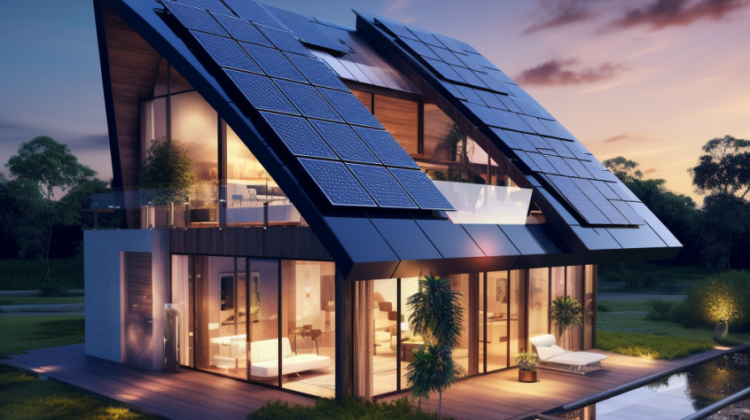
Imagine a home where the sun’s power is harnessed to provide electricity for all your needs. A house that saves you money on energy bills and contributes to a greener future. Welcome to the world of solar power in intelligent homes!
Solar power is the conversion of sunlight into electricity using photovoltaic panels. These panels, commonly known as solar panels, are typically mounted on rooftops to capture the maximum amount of the sun. The panels consist of numerous small units called solar cells, which combine to convert sunlight into direct current (DC) electricity.
Now, you might be wondering how this solar electricity powers your home. That’s where smart homes come into play. A smart home is equipped with advanced technologies that allow various devices and systems to communicate with each other, making your life easier and more efficient. Smart homes become even more environmentally friendly and cost-effective when combined with solar power.
Let’s dive deeper into how solar power and smart homes work together. When sunlight hits the solar panels, the solar cells absorb the energy and convert it into DC electricity. This electricity then flows into an inverter, which converts it into alternating current (AC) electricity compatible with your home’s electrical systems.
Once converted into AC electricity, the power can run your appliances, charge your devices, and heat or cool your home. The excess electricity produced by your solar panels can be stored in batteries for later use or fed back into the grid, earning you credits on your energy bill through a process known as net metering.
But how does a smart home fit into this equation? In a smart home, various devices and systems are connected to a central hub, which allows you to control them remotely using your smartphone or voice commands. This means you can monitor and adjust your solar power system, energy usage, and even individual appliances from anywhere, giving you greater control over your energy consumption.
For example, imagine you’re at work and realize you forgot to turn off your air conditioner. With a smart home system, you can simply use your smartphone to switch it off, saving energy and money. Furthermore, you can track your energy production and consumption in real time, allowing you to make informed decisions about when to use certain appliances to maximize your solar power usage.
Additionally, smart homes can automate energy-saving measures. For instance, the system can detect when you’re away from home and automatically adjust the temperature, turn off lights, or put certain appliances on standby mode to conserve energy. It can also provide energy usage insights and suggestions for further optimizing energy consumption patterns.
By combining solar power with smart home technology, you reduce your carbon footprint and save money on your energy bills in the long run. Solar panels generate clean, renewable energy, reducing the need for traditional fossil fuel-based electricity. Moreover, the advancements in smart home technology make it easier to integrate and control your solar power system efficiently.
If you’re considering upgrading your home, consider embracing solar power and turning it into a smart home. With this powerful combination, you can harness the sun’s energy, control your energy consumption, and pave the way toward a more sustainable future.